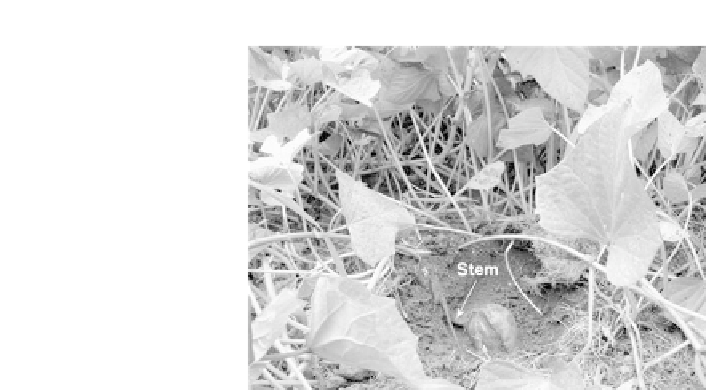Agriculture Reference
In-Depth Information
Figure
5.10.
Sweet potato plant showing stem connecting potato to the plant tops and other
roots.
root crops are planted on marginal land, hillsides, and other less productive areas and
allowed to grow with little or no care. The tubers are harvested after some time and the
land left fallow until another root crop is planted. In this way tubers are available to
even the poorest of farmers or families.
As the plants grow, tubers form along and among the roots, as seen in Figures 5.9
and 5.10. The connection of tubers to roots is obscured in Figure 5.9 but is obvious in
Figure 5.10. As shown, the tubers are located close to the place where tops emerge from
the soil.
5.5.4 Fertilization
Root crops require a soil that has high levels of potassium, and thus potassium fertiliza-
tion is essential for optimum production of quality tubers, which are essential for the
production of food items such as potato chips. Phosphate is also essential and is used
in fertilization of tuber crops. Although also essential, if used in excessive amounts
nitrogen can lead to decreased tuber quality, and so nitrogen fertilization must be
carried out carefully and monitored closely.
5.5.5 Diseases, Insect Pests, and Their Control
Microorganisms and insects attack the leaves and stems and the roots of tuber crops.
Both types of attacks can lead to serious losses of produce. Numerous types of fungi
commonly attack both leaves and tubers, causing losses both during production and
after harvest. Destruction of leaves causes a decrease in photosynthesis and thus a
decrease in yield. These types of diseases commonly cause wilting of the plant and
thus are called wilts or sometimes rots. Microbial attack, by fungi or bacteria, of
tubers causes discoloration and soft spots that can eventually destroy the whole tuber.








